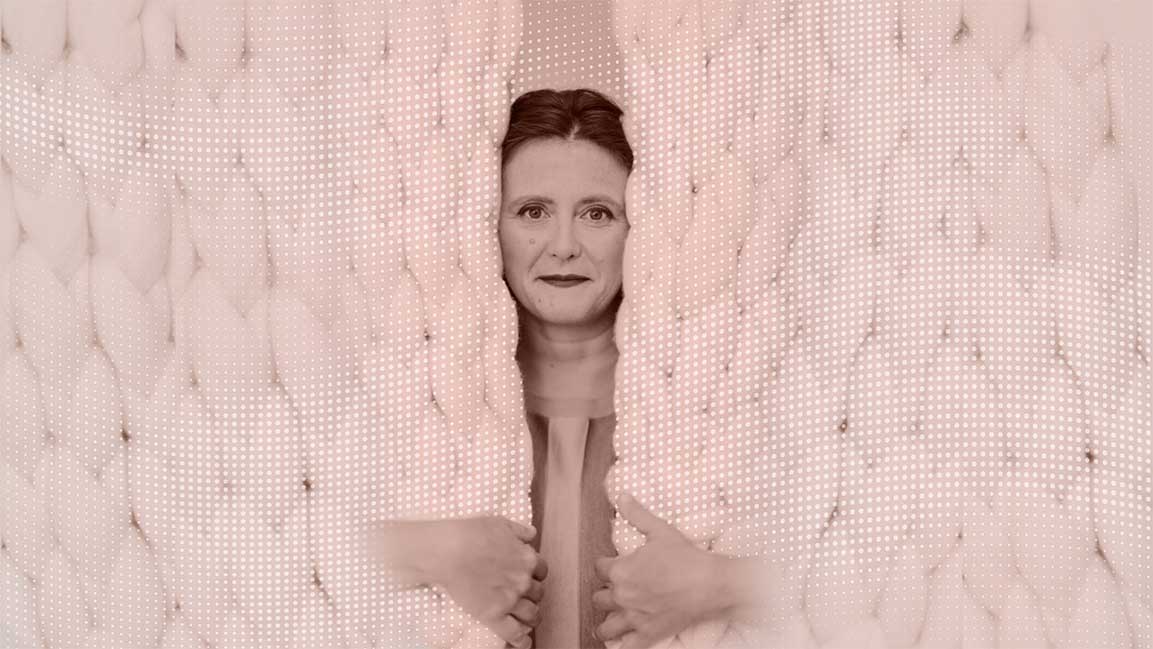- | 1:00 pm
Tashkeel’s artist-in-residence is weaving UAE’s culture into her work
Tashkeel offers residencies to overseas artists to engage with the UAE community, exchange perspectives, skills, and knowledge while developing a new body of work.

As inclusive desire in art continues to flourish and voices that form cultural narratives become more varied, it is no secret that the art ecosystem in the UAE is undergoing sweeping changes.
“The ecosystem of the creative and cultural industries in Dubai continues to thrive thanks to the breadth and depth of discourse generated by the 100,000-plus people who work within it,” says Lisa Ball-Lechgar, deputy director of Tashkeel. “Their myriad backgrounds, knowledge, and perspectives fuel creativity and innovation. The arts sector is vibrant and dynamic precisely because of the variety of the practitioners who help shape it.”
Established in Dubai in 2008 by Lateefa bint Maktoum, Tashkeel provides an environment for the growth of contemporary art and design practices rooted in the UAE.
At Tashkeel, the multiple nationalities, expertise, and skills form the heart of the organization. The arrival of artists-in-residence further enhances this community of UAE-based practitioners. The artists based overseas spend between 4 to 12 months at Tashkeel to exchange perspectives, skills, and knowledge while developing a new body of work.
The latest Tashkeel residency program with Loro Piana introduces Italian artist Paola Anziché, creating a body of work inspired by the UAE’s weaving and dyeing traditions.
The work seen in Entwined Matter is part of a thought process and investigation into the “hidden” culture surrounding Dubai and beyond, says the Turin-based artist Anziché. “By weaving spices and salt into the Loro Piana fibers, I wanted to pay homage to the ancient relationships and trading routes that the UAE has always shared with its neighboring countries – an interwoven culture forged at this crossroads between the East, South, and Asia.”
INTEGRATING ELEMENTS OF THE REGION
Her site research in Dubai for the Loro Piana residency at Tashkeel began in September, visiting many locations related to vernacular architecture, including archaeological locations in Al Ain and the BIDWA Social Development Programme, a center in Dibba Al Hisn that safeguards ancient material cultural practices run by Irthi Contemporary Crafts Council.
By carefully observing places and environments, Anziché discovered a wealth of references implicit in them, from the large corals traditionally used as bricks in the buildings of Hamra Village, Ras Al Khaimah (precious fractal geometries) to the varying shades of sand (especially noticeable at sunset) at Al Jahili Fort in Al Ain and the chromatic variations of the sands at Meliha Archaeological Center and Buhais Geology Park in Sharjah as well as the suggestive “crusts” of sand and salt found in sabhka (salt lakes) of Al Wathba, Abu Dhabi.
“I have integrated three elements of the region in the Loro Piana textiles and fibers. The spices because they have a symbolic meaning of the trade; salt, because in this country, to obtain drinkable water, it is desalinated from the sea, and there are also salt lake formations in the desert. The third element is the Sun that has become an important element in my process, given its function as a ‘fixing agent’, playing an active role in marrying the spices to fabrics as well as in combination with salt,” adds Anziché.
A textile expert and artist committed to sustainability through raw fibers and recycled factory off-cuts, such as wool, cashmere, and silk, Anziché creates soft, tactile sculptures. She says it stems from a research process that explores the potential of art to establish relationships with various cultural spheres such as anthropology, ancient ritual, bio-architecture, and science.
“My curiosity prompts me to travel and enter into contact with different traditions, which I then reinterpret. Manual work, gesture, and attentiveness to the materials employed, with a special focus on natural ones, are at the heart of my method, which is performative and participatory.”
Every material is chosen for its precise physical characteristics. These influence both the design process and the creative methods used. In doing so, she adds, it is possible to retrace the history, the original context, and, in some way, the uniqueness of each fiber.
CREATIVE COLLABORATIONS
According to Ball-Lechgar, the Middle East has always been an incubator of creativity. Creative sectors in many countries across the region harness the true value of culture as a tool for diplomacy, economic growth, identity, social development, and educational enhancement.
“The UAE is no different. The country’s art history dates back well before 1971. However, over the last 50 years, we have seen a diversification of art practices that is now embracing the public sphere and the digital universe at a pace not before seen,” she says.
At a time when diversifying and deepening engagement in the arts is the mantra, creative collaborations have been playing a key role in promoting art. It is part of the R&D, says Ball-Lechgar.
“This supports creative growth by fostering dialogue and exchange of knowledge, skills, and experience across various disciplines and gives people the confidence, curiosity, and opportunity to experiment with new concepts and materials, which can result in amazing discoveries.”
One form of collaboration is residencies, which offer creatives time and space away from usual surroundings and obligations to embark on journeys of personal growth and professional development.
“Since Tashkeel opened its doors in 2008, it has facilitated residencies for 80 artists, curators, and designers from over 30 countries; Paola is our 78th. These residents do not work here in isolation. By engaging with others in our community, everyone grows,” says Ball-Lechgar.








































